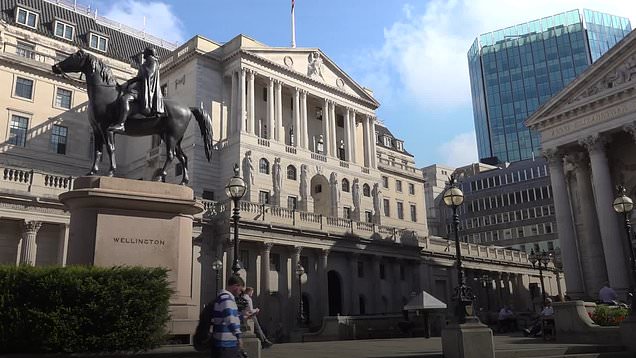A warning light on the economy’s dashboard is flashing red.
It is not sluggish GDP growth that is glaring most vividly, nor the modest rise in unemployment.
Instead, a small band of economists fear that a slump in the money supply is the clearest sign yet of the economy facing a serious recession. To them, it signals that inflation will be crushed so completely that Britain instead risks falling into a deflationary trap.
Broad money supply, the figure watched by these economists, measures the amount of cash that households and businesses have on hand to spend immediately.
It includes coins and banknotes, funds in current accounts and instant access savers, and other financial instruments that are effectively as good as cash when it comes to businesses keeping large sums on hand to spend at a moment’s notice.
In the jargon of Bank of England datasets, it is known as M4ex.
The Bank’s measure shows a startling 4.2pc fall in broad money supply over the past 12 months, far steeper than anything suffered in the aftermath of the financial crisis. Pre-pandemic, growth in broad money supply averaged 3.8pc per year.
Tim Congdon of the Institute of International Monetary Research calls the decline over the last year “the largest one-year drop in the modern statistical record”.
“It was exceeded in 1922, but that is the one and only precedent,” he says.
That is a worrying comparison: “1921 and 1922 experienced a vicious slump after a boom following the First World War.”
Followers of the money supply are known as monetarists. This school of economics had its heyday in the early 1980s but fell out of favour as central banks shifted focus towards interest rates, rather than money supply, as a method of controlling inflation.
However, adherents of monetarism argue that money supply is a critical leading indicator for growth and inflation, showing the direction in which the economy is heading.
Simon Ward, economist at Janus Henderson, says: “When people or firms are planning to increase their spending, they move their assets into liquid form first. So that move into money signals increased confidence and, a bit later on, spending.
“It is an early warning indicator of animal spirits.”
The current data shows animal spirits are firmly tamed.
One factor hitting the money supply is that households are taking cash out of instant access bank accounts, which pay little interest, and locking it away in fixed-term bonds. This generates more interest but means the funds are no longer available to spend immediately.
Ward notes that the latest drop is “exaggerated” by the pension squeeze after the mini-Budget last year, which pushed LDI funds to liquidate assets to boost their cash holdings. A reverse of that trend since then has triggered a sharp decline in liquid assets.
However, even excluding this factor, the money supply is still shrinking.
Julian Jessop at the Institute of Economic Affairs says the impact of money supply on growth and inflation is hard to measure, but currently looks bad.
“It could be that we are going to be really lucky and that we see a big fall in inflation, or it could be that we are about to head into a big recession, or some combination of the two,” he says.
“Just looking at the money supply numbers does not necessarily tell you which one of those it is going to be. In the worst of all worlds, we would end up with deflation and recession, which I think is a significant threat.”
When deflation strikes and prices fall, people hold off spending in anticipation of lower prices, thus hammering the economy. At the same time, the real value of debts rises and crushes borrowers.
Ward and Jessop both argue the Bank of England bears some responsibility for the current situation after going overboard with quantitative easing during the pandemic.
The money supply was already surging as households, unable to spend, piled up cash in their bank accounts. The Bank then pumped more cash into the economy. It has since overcompensated with too much quantitative tightening since the end of 2021, they argue, restricting the amount of money flowing through the economy.
Tracking the money supply is still wildly unfashionable in the world of economics. This month’s Monetary Policy Report – the Bank of England’s major quarterly update on the economy – included just a single paragraph on it.
However small though it may be, it represents the biggest mention in any Monetary Policy Report for more than five years.
The Bank acknowledged its own role in squeezing the money supply via quantitative tightening. However, it disputed the extent to which shifts in the money supply are down to its own actions and their subsequent impact on inflation.
Earlier this year Ben Broadbent, the deputy governor for monetary policy, said: “The lesson of history is that most movements in broad money occur independently of variations in the size of the central bank’s balance sheet.”
Regardless of what caused it, concerns are growing.
“The broad money numbers are contracting year over year,” says Ward. “This says to me that there is a very serious risk of moving into deflation in 2025.
“The economy has essentially stagnated over the past year. I think we are moving into a more formal recession now.”
D Telegraph
 RSS Feed
RSS Feed













 November 9th, 2023
November 9th, 2023  Awake Goy
Awake Goy 








 Posted in
Posted in  Tags:
Tags: 
















